How an ecommerce site increased commercial monthly organic traffic from 37K to 210K
Key tactics for driving ecommerce SEO success, from targeting high-search commercial keywords to earning brand mentions through digital PR.
See how Lectric eBike has transformed SEO to gain valuable insights for any ecommerce business looking to significantly enhance organic search traffic and compete in high-stakes markets.
At a glance
- Massive traffic increase: Organic clicks rose from 37,000 to 210,000 per month by targeting high-search commercial keywords.
- Top Google rankings: Secured top three positions for competitive terms like “electric bike” (246,000 searches) and “eBike” (90,500 searches), boosted by strategic digital PR and a focus on the online audience journey.
- Brand keyword efficiency: Increased brand-specific searches like “Lectric ebike,” by securing links and brand mentions in content at key touch points along the audience’s journey.
- Integrating digital PR and SEO: Integrated digital PR with SEO efforts to enhance visibility and maintain prominent search rankings, using the audience journey to guide both on-page and off-page tactics.
Ecommerce SEO can be painful. You can try blog or informational content, links to category or product pages and rank well for informational content just to never see an impact on traffic with buying intent.
This is not the case with Lectric eBike, an electric bike ecommerce company. The site was able to:
- Rank in the top three positions of Google for commercial keywords that get up to 246,000 average monthly searches.
- Generated over 210,000 clicks per month by generating both brand and non-brand organic traffic.
They did all this with a heavy focus on digital PR and marketing-owned assets throughout the audience’s online journey to buy electric bikes.
This article examines Lectric’s SEO success and points out key methods for driving similar results in ecommerce or any vertical with high-competition keywords.
Background: The brand
Lectric eBike is one of the fastest-growing electric bike companies in the U.S., selling over 400,000 eBikes in the last four years. Their Lectric XP bike is the third most popular EV in the U.S.
However, in January 2022, two years after designing their first electric bike, the site received only 37,000 sessions (Semrush) and no significant keywords ranked in the top three.
Let’s look at how Lectric completely changed its organic visibility in just two years.
Organic performance details
Organic traffic comes from both non-brand and brand keywords. Lectric ranks for highly competitive commercial intent keywords and brands in the top three positions of Google.
- Ranks in position three for “electric bike” with 246,000 average monthly searches, with an estimated 5,900 clicks (Figure 1).
- Ranks in position one for “eBike” with 90,500 average monthly searches, with an estimated 3,200 clicks (Figure 2).
- Branded keyword “Lectric eBike” has only 40,500 searches but generates 32,400 in traffic (Figure 1), with all branded keywords generating over 150,000 organic clicks (Figure 3).
- Organic traffic grew from under 40,000 to over 210,000 clicks from January 2022 to March 2023 (Figure 2).
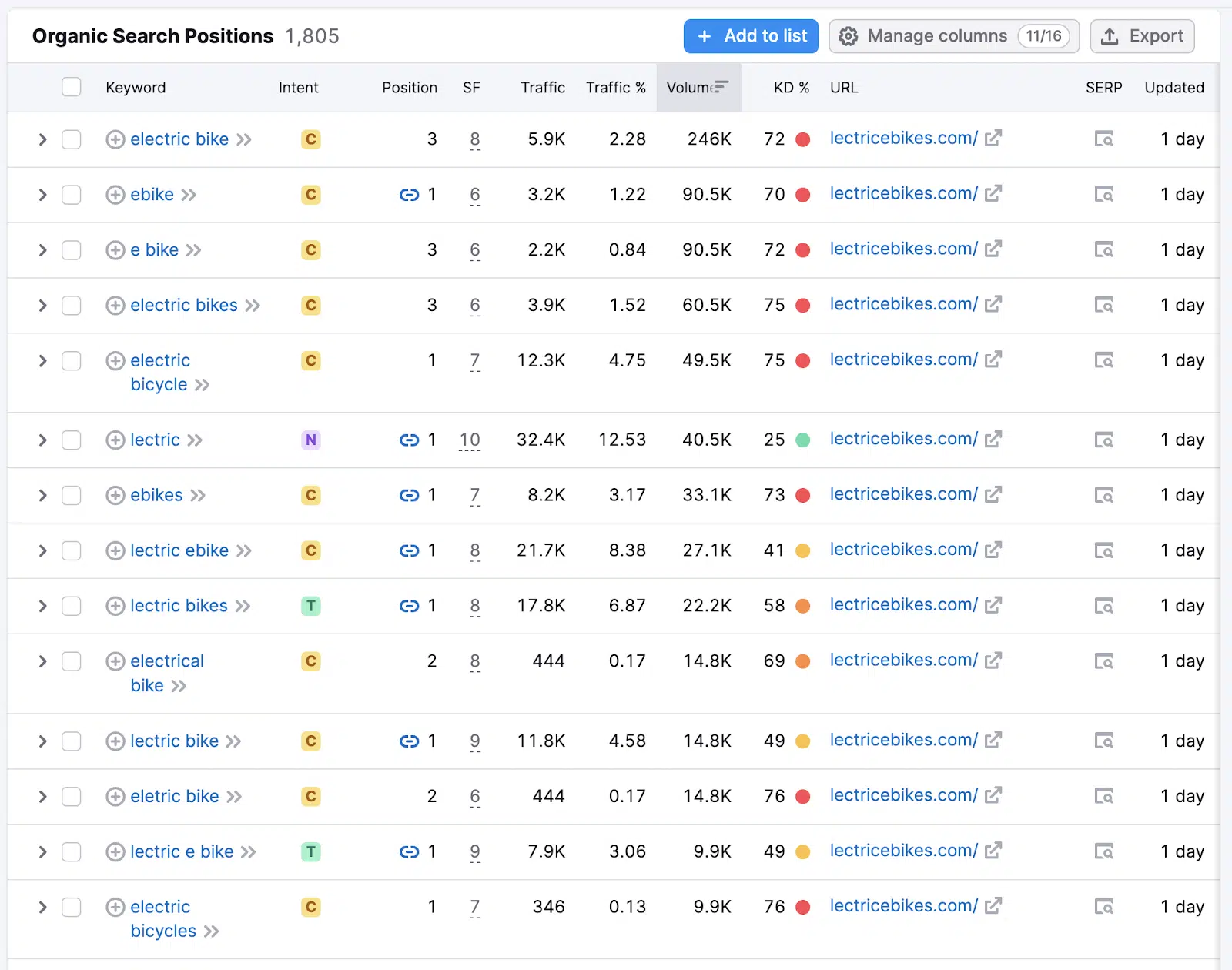

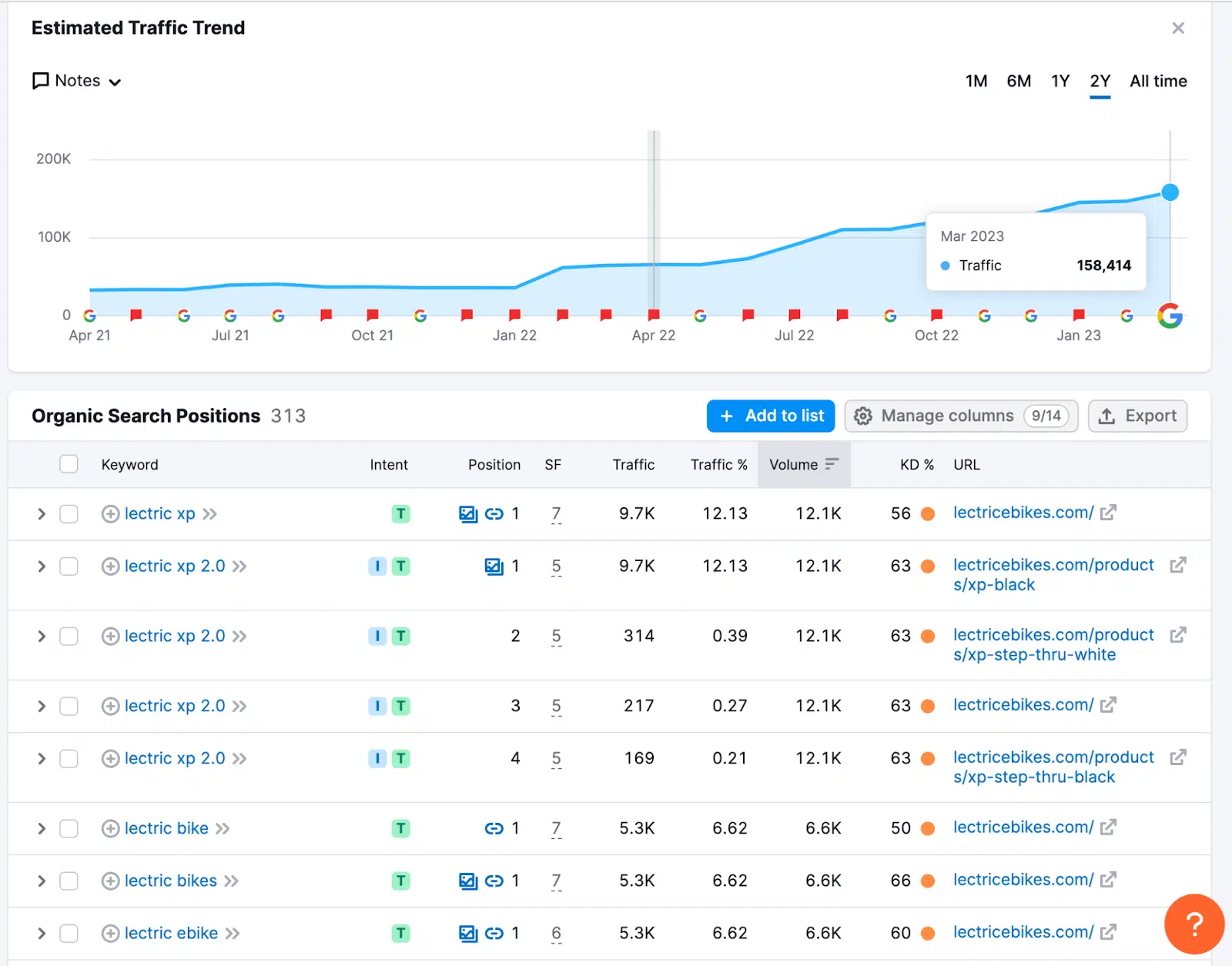
Non-brand keyword CTR
Ranking in the top three positions in Google generates the vast majority of clicks (Figure 4). Thus, ranking in the top positions is still a good goal.

Although this CTR study shows CTR for standard blue links and not the feature snippets, we can assume that ranking in the top spots in any listing type could drive strong CTR.
Additionally, ecommerce SERPs tend to have ads taking up some of the real estate, which can reduce organic CTR. Thus, this CTR study signifies that ranking higher means more traffic.
Branded keyword CTR
Branded keywords have a 60% CTR in position one (Figure 5) and may be higher with site links. In many cases, these terms have a much higher conversion rate. Even though phrases that contain “Lectric” have low total search, total traffic can be much higher and provide a higher ROI.
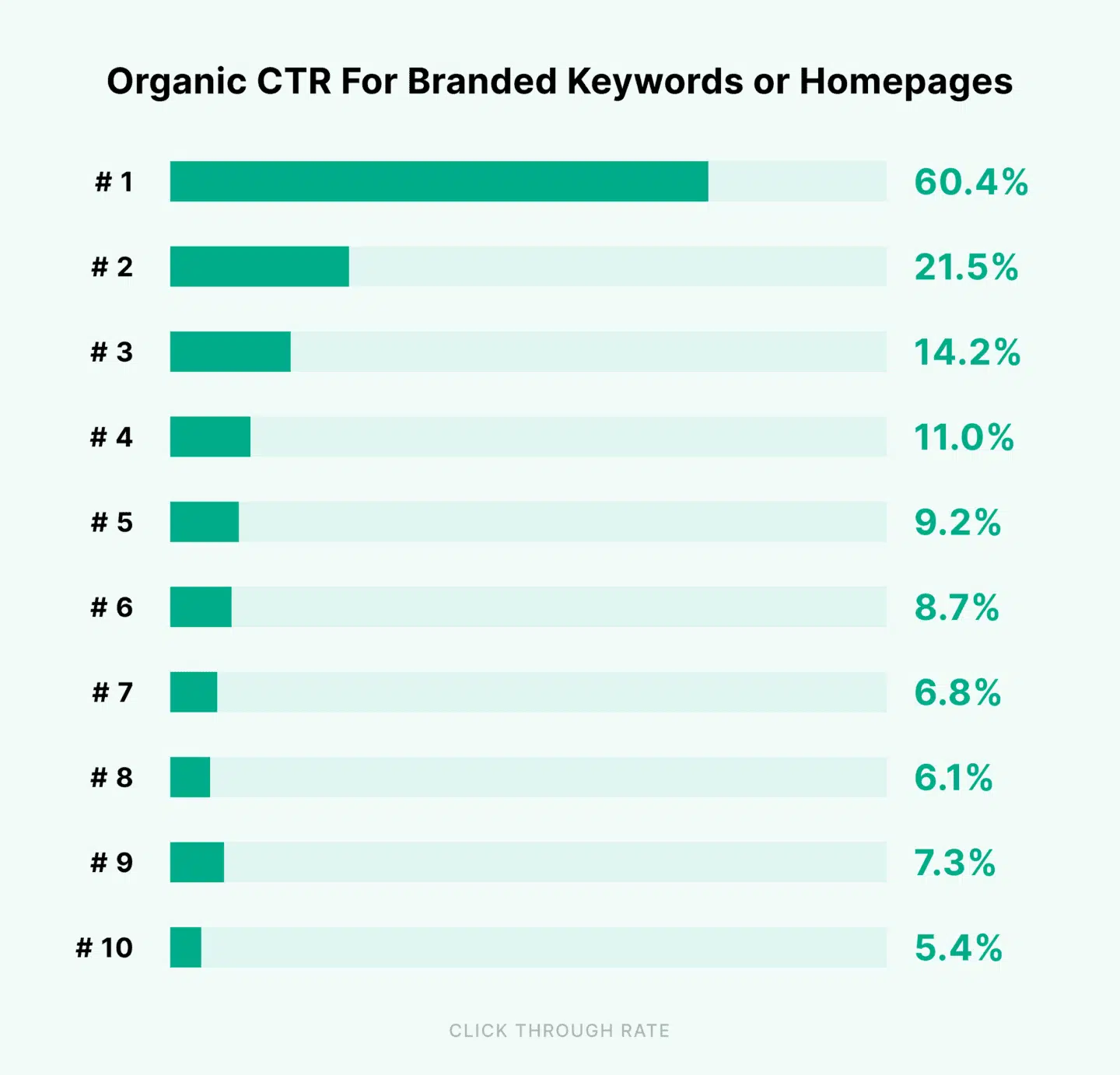
Note: I use the term “clicks” to explain “organic traffic” from Semrush’s reporting. This is because Semrush estimates clicks based on keyword search volume and click-through rates (CTR), thus not calculating direct sessions or users.
Why does Lectric rank in the top 3?
In the case of Lectric, I examined the relationship between brand mentions, referring domain links and organic traffic (brand and non-brand) growth.
Starting in January 2021, as links from referring domains and brand mentions increased, so did brand search volume (Figure 6).
This shows a relationship between all the measures. Thus, we can’t understand the non-brand ranking without examining all measures.
Between March 2021 and November 2021, brand mentions and referring domain links increased (Figure 6), and brand traffic followed that, starting around January 2022. The brand mentions slowed in January 2022 but increased again in June and September 2022. Following each spike in brand mentions, organic traffic grew.
Each spike in brand mentions reflects more media mentions, but traffic lags. Lectric constantly secured media coverage and links, influencing the audience to search for the brand name.
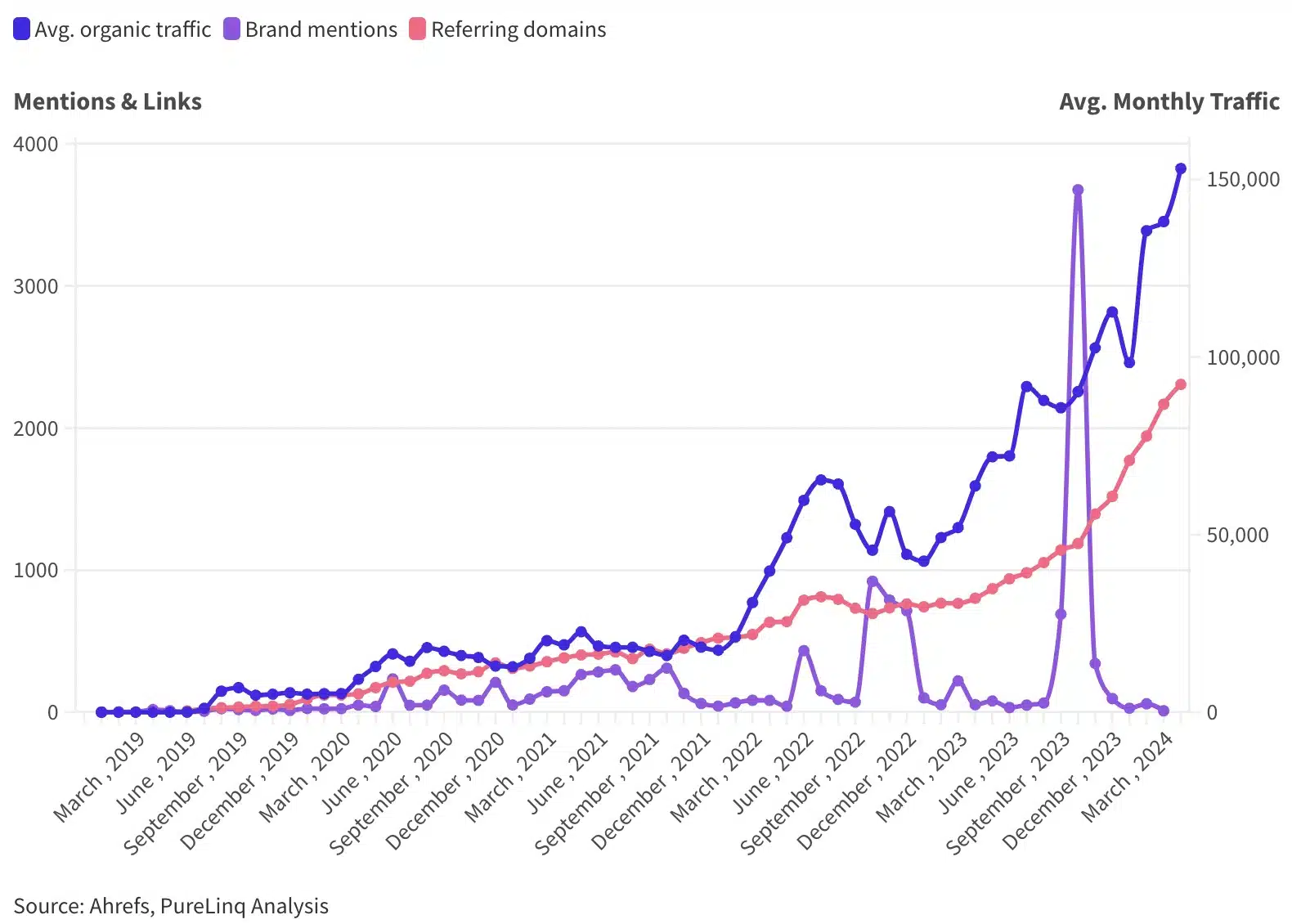
Note: Ahrefs and Semrush provide dramatically different traffic estimates in many cases. I normalize the data by looking at trends instead of the raw numbers.
The brand search index from Google Trends doesn’t show a strong relationship between brand search volume and non-brand clicks from 2022 to 2024, but before 2021, Lectric didn’t have many brand searches.
After November 2021, brand mentions increased and non-brand traffic followed (Figure 7). Additionally, sites with a low number of brand mentions and brand searches can rank in the top three (Figure 8).
This indicates that increasing brand search volume doesn’t increase non-brand clicks at a certain point, but having some brand search is important when targeting the top three rankings.
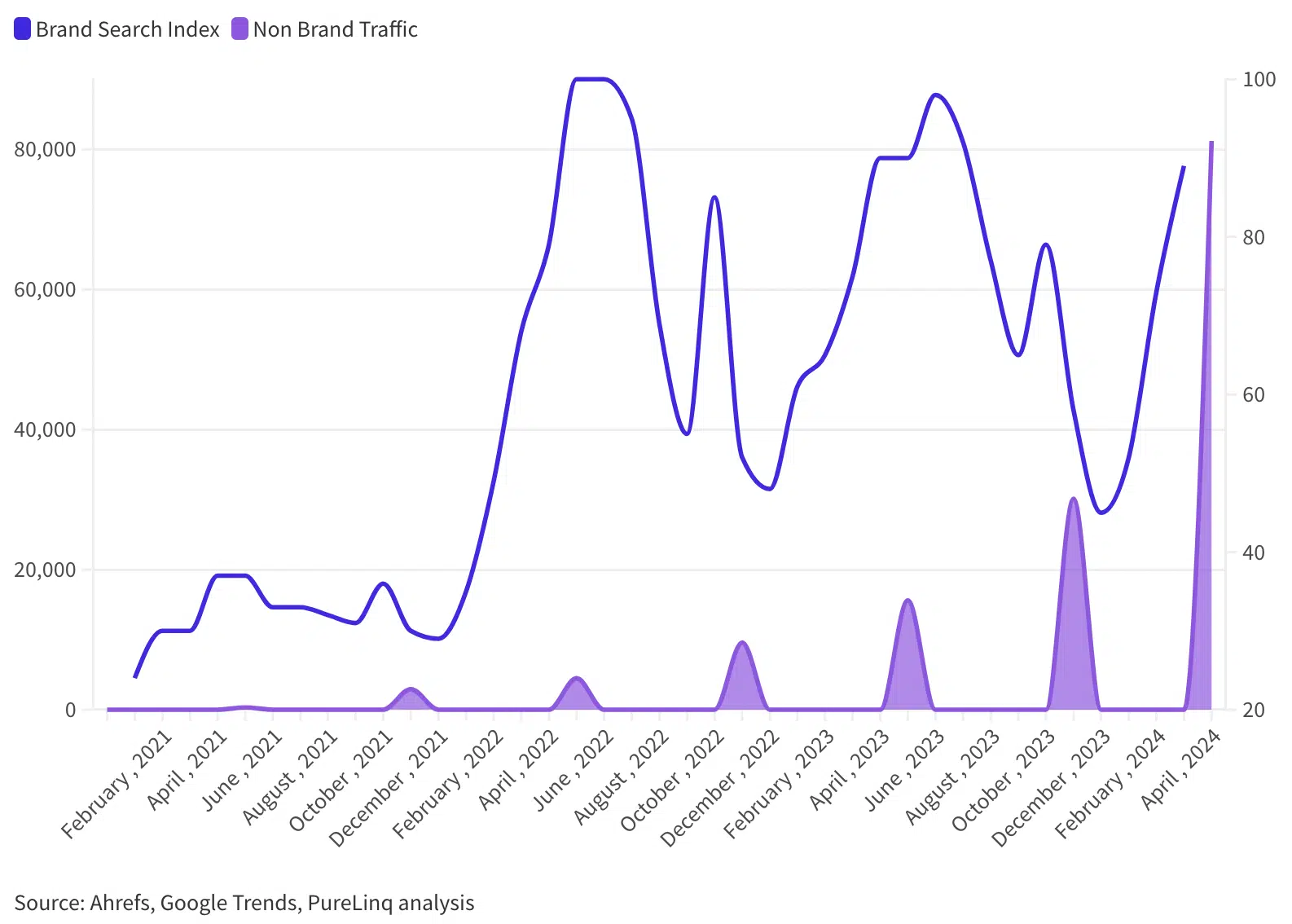
I recently analyzed top-ranking sites in the cyber security vertical. I found a correlation between brand search volume, brand mentions, and the number of keywords ranked in the top three positions of Google (Figure 8).
The x-axis shows U.S. search volume for brand keywords, the y-axis shows the number of brand mentions, and the bubble size shows the number of keywords ranked in Google’s top three positions. The larger the bubble, the more keywords ranked in the top three.
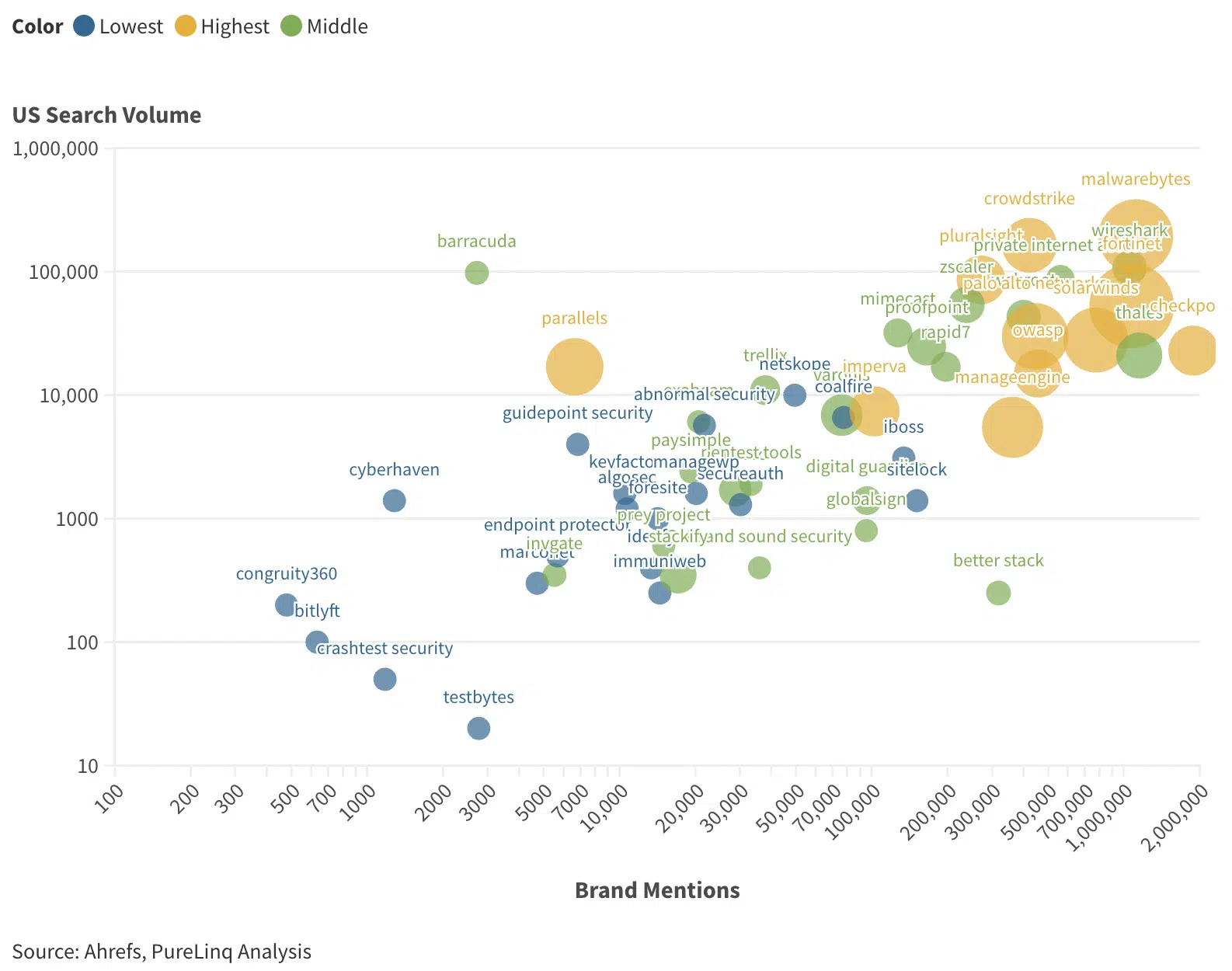
I know; correlation’s not causation. The lurking variable here is Google’s ability to identify and attribute value to a site based on brand mentions’ impact on driving brand search.
But I assume that brand mentions are earned to drive brand search and links are included in many content with brand mentions.
What type of coverage did Lectric receive?
I combed through the top media placements to better understand the type of placements driving this rank and brand search.
Google has noted that links are less impactful now than in the past, but at the same time, links and brand mentions from media the audience consumes and the impact on brand search seem to influence ranking.
I use audience journey maps to analyze media because they’re designed to consider the audience’s perspective. Google has constantly stated that it should focus on the relevance of marketing to the audience instead of any specific ranking signals. I agree with this, and the audience journey map helps us do just that.
Lectric gained media coverage (links and mentions) across each stage of the audience’s journey.
Awareness stage: Media articles in environmental and lifestyle outlets introduce the concept of eBikes, highlighting Lectric for its innovation and environmental benefits.
- Podcasts
- Article on post-COVID eBike growth
- Article on using an eBike on a mountain bike trail
Consideration stage: Potential customers encounter Lectric through comparative reviews and expert blogs, which detail the brand’s advantages over competitors in contexts like urban commuting.
- Resource lists
- General brand mentions
- Mentions in lists for RV-related bikes
Decision stage: In-depth reviews, customer testimonials and featured stories in niche publications help solidify buyer decisions by showcasing Lectric eBikes’ practical benefits and user experiences.
- Awards
- Feature articles all about the brand
- Customer stories about biking on trails
Strategic links and mentions in authoritative and relevant media across the audience’s journey seem to have boosted Lectric’s organic visibility and search rankings.
While directly measuring the impact of specific media appearances on SEO is challenging, indicators like increased brand searches, link and mention trends and content context suggest a significant impact on organic visibility.
Consistent, quality media coverage correlates with these improvements, underscoring the importance of integrated digital PR and SEO strategies.
Media coverage guides customers through the audience’s journey and can significantly impact organic search rankings and drive brand searches. A strategic approach to digital PR that aligns with SEO goals is essential for maximizing visibility and growth.
What this means for your SEO strategy
Do you want to drive results similar to those of Lectric? I write extensively about digital PR for SEO and cross-functional PR and SEO teams. I examine every case study under this lens.
Securing media coverage that can improve organic visibility and brand search requires a strong strategy integrating both digital PR and SEO, which we see from Lectric.
Targeting the audience journey
Identify the local, national and trade media your audience consumes when deciding to buy your product. Create an audience journey map and list the relevant media at each stage of the journey.
I create an audience journey map for most of my digital PR projects. Below is a template I built to simplify the process of mapping media touchpoints to the stages.
Although you don’t need to be this detailed, understand that you have to answer your audience’s questions at each stage of the journey on the websites where live.
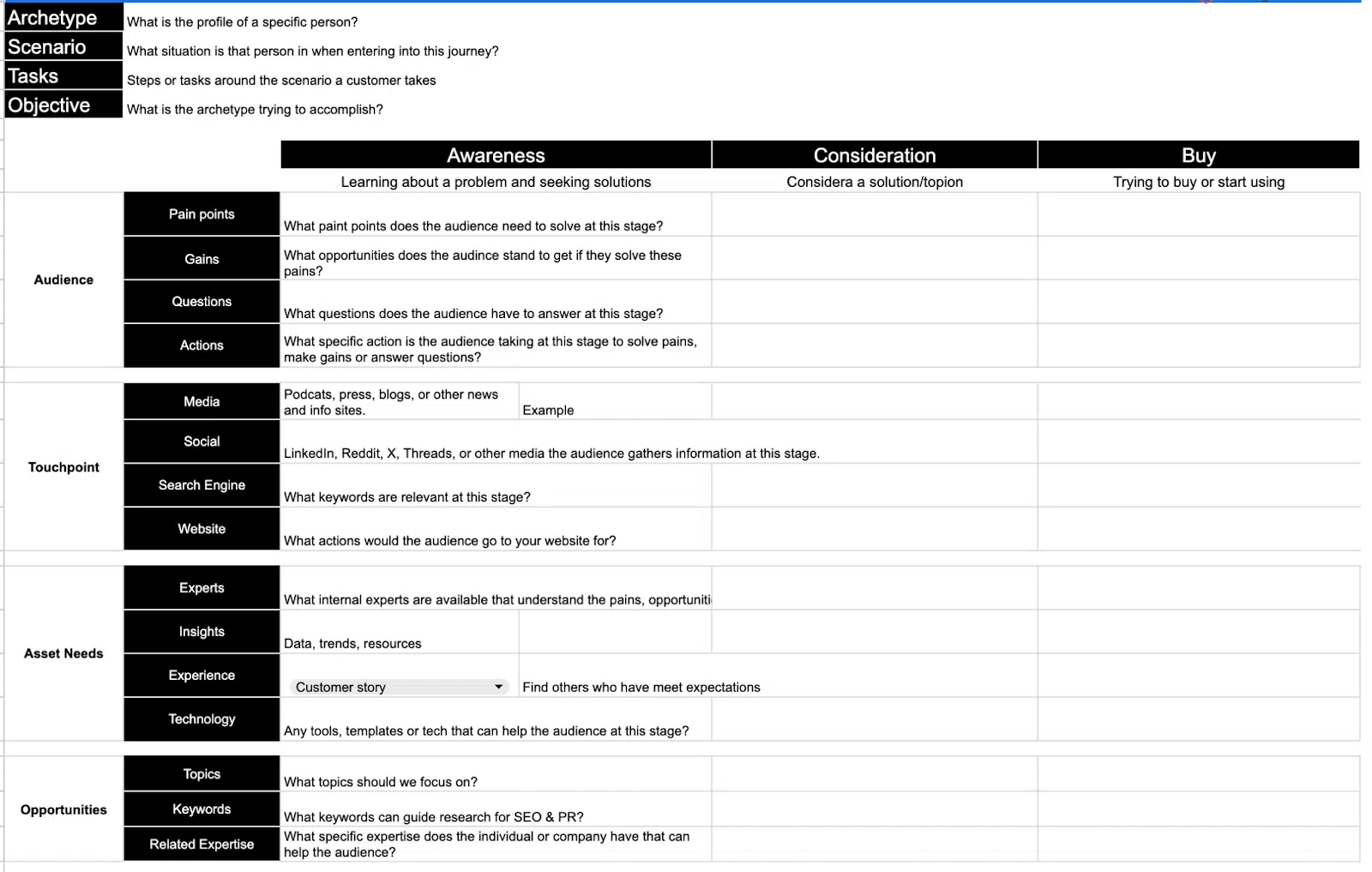
As with Lectirc, they answer the question “Can I use an electric bike on bike trails?” with their article placement travelawates.com.
They effectively targeted the awareness stage at the right touchpoint. However, gaining the right placement requires advanced digital PR strategies.
Use digital PR for SEO
Digital PR for SEO markets your website to the audience through media, securing links and brand mentions as a result. Digital PR builds relationships with national, local and trade media: press and podcasts.
I use a strategy called owned asset marketing (OAM), which markets the website to media that secure links and brand mentions on the homepage, case study pages, research reports or bio pages.
OAM works by identifying internal expertise related to media trends and creating unique research assets to pitch to the media.
- Internal expertise: Show internal expertise with individual experts or user stories to gain media coverage.
- Trends: Analyze media or audience trends to follow news cycles or predict future story ideas.
- Unique research: Surveys or analysis of public data that answers important questions better than other places.
If anything, do this next
If you have had trouble ranking in the top three in search of your high-search keywords or have stalled in driving significant sales in ecommerce or any business type, focus on understanding key media touchpoints and messaging across the entire audience journey. These touchpoints can be social, press, podcasts or blogs your audience reads.
Instead of just building links to specific pages to improve ranking, consider using digital PR to build links and mentions in content that create value for the audience and media. This is how you leverage internal experience and expertise to build authority and trust.
Your context should use your experience and expertise to build authority and trust. Do this by sharing case studies, creating unique research and providing expert insights to the media to earn links and mentions.
Contributing authors are invited to create content for Search Engine Land and are chosen for their expertise and contribution to the search community. Our contributors work under the oversight of the editorial staff and contributions are checked for quality and relevance to our readers. The opinions they express are their own.
Related stories